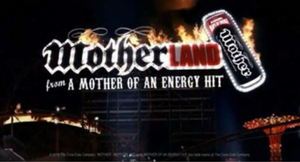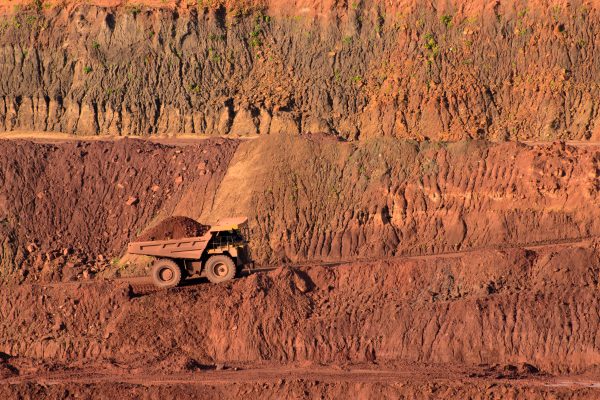It’s the news that no trade mark ‘parent’ wants to hear: their ‘child’ is being removed by the (trade marks) Registrar. The owner of the Mother line of energy drinks is facing an uphill battle as it struggles to stop the removal of a number of its Mother-derivative brands from the trade marks register.
In the latest instalment of the trade mark saga between Energy Beverages LLC (EB) and its drink rival, Cantarella Bros Pty Ltd (Cantarella), the Full Federal Court dismissed, in part, EB’s appeal against Justice Halley’s decision in the first instance, thereby granting Cantarella’s application to remove EB’s registered MOTHERLAND mark (no. 1345404) from the register for non-use.
However, EB has the option of applying for special leave to appeal to the High Court if it chooses to do so. Further, the energy drinks giant is obviously keen to keep the kid in the family, as it filed fresh trade mark applications last year in an attempt to reincarnate its embattled brands – including MOTHERLAND (application no. 2005023). But, unsurprisingly, those reincarnation attempts are currently under opposition by Cantarella.
Sounds like a mother of a mess? You bet! This case highlights the pitfalls of using a famous parent brand and its derivative child brands – such as MOTHER and MOTHERLAND – alongside one another in online promotional activities, as the Full Court found that the MOTHERLAND mark was not used as a trade mark at all, and only the MOTHER mark was performing the function of a badge of origin for EB’s energy drinks.
If you are still interested in implementing a parent−child duo branding strategy, below are our key takeaways from the case.
1. Ensure that your child brand is visually distinct from its famous parent brand.
The Full Court found that the MOTHERLAND mark was, without exception, stylistically and functionally overpowered by the MOTHER mark in every instance of use that was relied upon by EB.
EB relied heavily on evidence of a MOTHERLAND advertising campaign run by The Coca-Cola Company (the previous registered trade mark owner) (TCCC) from 2010 to 2011. The campaign was based on a marketing construct; namely, a fictional ‘Motherland’ theme park. The campaign’s centrepiece was a TV commercial, and a 15-second video of that commercial was posted on EB’s dedicated MOTHER YouTube and Facebook pages in 2011.
However, as shown in the below screenshot of that video, the word ‘Motherland’ was rendered in a way that its first component, being ‘Mother’, was depicted in its well-known black gothic font with twirls, whereas its second component, being ‘Land’, was rendered in plain red font. The whole word was juxtaposed with a can of energy drink, again with the MOTHER mark in its distinct gothic font.

EB also sought to rely on content uploaded via its various social media accounts to show its use of the MOTHERLAND mark. However, the profile picture used for each of its social media accounts was the gothic script MOTHER mark, and that mark was shown in close association with the MOTHERLAND mark in every example of social media posts that EB had relied on. In other words, EB was unable to show any use of the MOTHERLAND mark that was not overshadowed by the famous MOTHER mark, and in every instance, only the MOTHER mark, by virtue of its distinct stylisation, was used to distinguish EB’s energy drinks from products offered by other traders.
2. Ensure that you are using your child brand as a separate brand, rather than a marketing construct in the service of its parent brand.
The Full Court reinforced the distinction between, on one hand, use of MOTHERLAND as the setting of a fictional narrative used to promote MOTHER-branded energy drinks, and on the other hand, use of the mark as a badge of origin.
The Court paid particular attention to the description under the ‘About’ tab on EB’s dedicated MOTHER YouTube page, which reads, in part:
“Welcome to MOTHERland! A place conceived by men with big plans and little sense. A monument to mans [sic] ability to build things bigger and more explosive than they need to be. A world fuelled by the massive MOTHER hit of energy! … So if you're [sic] thirsty for a rush and danger is your first, middle and last name, grab yourself a can of MOTHER and head to the most over the top place on earth.”
As shown in the above extract, the ‘Motherland’ construct merely underscored the adventurous and rebellious personality of the MOTHER brand and sought to reinforce the connection between that brand and its target demographic. For that reason, the Court found that the ‘Motherland’ construct did not, in its own right, possess the character of a brand, as it did not indicate a connection between MOTHERLAND and MOTHER energy drinks in the course of trade. Neither TCCC nor EB were promoting tickets to a ‘Motherland’ theme park, nor were they promoting any products actually badged with the MOTHERLAND mark.
3. Ensure that your social media content is targeted at particular jurisdictions, to show genuine commercial use of your trade marks in those jurisdictions.
Even if the MOTHERLAND commercial could amount to use as a trade mark, the Full Court was not convinced that the video showed genuine commercial use of that mark during the non-use period; namely, between 12 January 2016 and 12 January 2019. That is because the mere uploading of content on a website outside Australia (such as global social media platforms), does not amount to use of a mark in any jurisdiction in which it was possible to access the content. Trade mark use in a jurisdiction requires both an intention to target that jurisdiction and a downloading of the content in that jurisdiction.
As mentioned above, the video was uploaded to EB’s dedicated MOTHER YouTube and Facebook pages in 2011 and had remained on those platforms simply because they had not been manually removed or hidden by the account administrator. However, the only activity on those pages during the non-use period, which EB sought to rely on, were:
- a post made by a ‘Kenny Sherman’ on 29 April 2018 on the MOTHER Facebook page, comprising a smiling emoji; and
- a post made by a ‘Vegetarian Soylent Green’ some time in 2018 on the MOTHER YouTube page, stating “Please turn it into an actual theme park. You have no idea how long I’ve been waiting to burn my meat on a rollercoaster.”
Although the above posts appeared to refer to the depiction of a theme park in the MOTHERLAND video, it was not possible to determine on the evidence whether the posts were made by persons who were physically in Australia, and whether the posts were made after those persons had accessed the MOTHERLAND video in the course of trade, or at all. Accordingly, EB was unable to prove, solely based on those two pieces of evidence alone, that it had used the MOTHERLAND mark as a trade mark in Australia during the non-use period.
For more trade mark parenting tips and tricks, or to discuss legal considerations for your online branding strategy, please contact our Intellectual Property, Technology and Cyber Security team.


